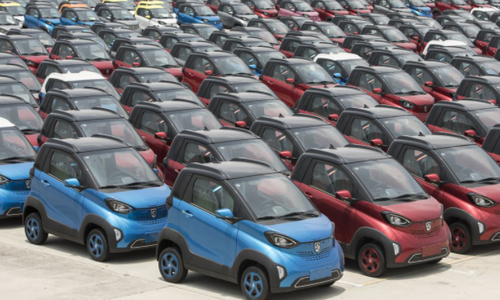Chinese EVs Aren’t Retaining Their Value Like ICE Vehicles
On one hand, we’ve done nothing but talk about how the price of used cars has skyrocketed as a result of depleted inventory, combined with supply chain and semiconductor woes.
But in China, they’re having the opposite discussion when it comes to EVs: the vehicles just can’t seem to hold their value, according to a new writeup by Caixin.
The writeup profiled companies like XPeng, who have been forced to buy back older versions of their models from customers who worry about the speed with which EV makers are coming out with new models. “Several” other automakers had to take similar measures over the past few years, the article notes.
In fact, a new survey from Geek NEV shows that new cars “sold for 100,000 yuan or less in China hold on to 67.8% on their value on average after their first year, while cars running on the old internal combustion engine retain 74.3% of their value after three years on the road”.
EVs have trouble holding onto their value because of how unpredictably their batteries degrade and how China’s subsidies for EV have led to higher prices for the vehicles than there ever should have been in the first place.
Caixin notes that “there is no easily accessible data or commonly accepted standard for valuing the quality of used batteries”. On top of this, batteries have been evolving faster than automakers can keep up. The report says that the “average range an EV can travel on a single charge increased from 212 kilometers (131.7 miles) in 2017 to 391 kilometers in 2020”.
And what would a Chinese industry be without the government interfering with the economics of it?
Subsidies that started in 2010 and will be phased out in coming year used to offer as much as 70,000 yuan to automakers. Those numbers moved to “100,000 yuan for a car that could travel 150 kilometers to 250 kilometers on a single charge, and 120,000 yuan for a car with the range of more than 250 kilometers.”
Automakers were incentivized to price vehicles higher because subsidies from the government weren’t allowed to exceed 60% of the vehicle’s sticker price.
When the government cut subsidies by 50% in June, many vehicles ended up on used car lots where they were sold at prices “far below retail,” the report says.
As the industry evolves, there are some optimistic signs that EVs are holding onto their value for slightly longer. Caixin wrote:
The Wuling Mini EV and Tesla Model 3, the two best-selling EVs on Chinese market since 2020, have managed to maintain their second-hand price after one year on the road at the same level as conventional vehicles, according to data released by the CADA in November.
Automakers are also starting to phase out their buyback programs, the report says. At the same time, there have been calls to re-sell EVs separately from their batteries in an effort to help them maintain their value. EVs can have lifespan of at least 15 years, when the battery isn’t taken into account, the report concludes.
Tyler Durden
Sun, 01/30/2022 – 21:00
via ZeroHedge News https://ift.tt/neyWQfsoA Tyler Durden
